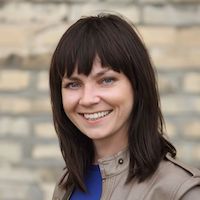Imaging the Possibilities
Using biophilia in commercial and institutional buildings of all types
Presented by Aga Artka, Dan Roller, Dr. Karen Schloss, and Peter J. Arsenault
Learning Objectives:
- Identify the impact that imagery and color can have on healing or general wellbeing related to the health and welfare of building occupants.
- Explore the scientific principles of biophilic design and the use of imagery related to those principles.
- Recognize how to incorporate biophilic science into the interior design of all types of commercial and institutional buildings.
- Review some of the available products and systems that can be used to incorporate biophilic and other imagery into buildings.
Credits:
AAA 1 Structured Learning Hour
This course can be self-reported to the AANB, as per their CE Guidelines
AAPEI 1 Structured Learning Hour
MAA 1 Structured Learning Hour
This course can be self-reported to the NLAA.
This course can be self-reported to the NSAA
NWTAA 1 Structured Learning Hour
SAA 1 Hour of Core Learning
This course can be self-reported to the AIBC, as per their CE Guidelines.
As an IACET Accredited Provider, BNP Media offers IACET CEUs for its learning events that comply with the ANSI/IACET Continuing Education and Training Standard.
This course is approved as a Structured Course
This course can be self-reported to the AANB, as per their CE Guidelines
Approved for structured learning
Approved for Core Learning
This course can be self-reported to the NLAA
Course may qualify for Learning Hours with NWTAA
Course eligible for OAA Learning Hours
This course is approved as a core course
This course can be self-reported for Learning Units to the Architectural Institute of British Columbia
This test is no longer available for credit
Research has been conducted for several decades on the health and wellness implications on people who spend the overwhelming majority of their time indoors. In fact, it has been observed that the average American currently spends 90 percent of their time inside of buildings. It has also been observed that human beings have an intrinsic connection to the natural environment. In response, the field of biophilic design has become recognized as one way to bring people and nature closer together. In particular, the use of printed imagery of natural scenes and elements has been found to have a measurable positive effect on human wellness and health.
Based on this ongoing work, the panelists in this webinar address both the theoretical and practical aspects of using biophilic visual imagery to enhance building interiors and thus improve human wellness. We begin with the science behind the ways that people interpret meaning from visual features. Next, is a discussion on how to strategically use images and color as design elements that successfully implement the scientific concepts. Finally, a practical discussion reviews some of the products that provide durable visual imagery and options that are suitable for use in all types of commercial and institutional building settings such as office, retail, education, hospitality, healthcare, and others.

Photo courtesy of Inpro

|
Dan Roller is the Product Manager for architectural signage for Inpro. Inpro is an industry leader in interior and exterior architectural products. In his 19 years with Inpro, Dan has worked with contractors, architects, designers, and facilities to give a better understanding of ADA signage. He continues to develop standard and custom projects for facilities across many different industries with careful consideration for the Americans with Disabilities Act.
|

|
Dr. Karen Schloss is an Assistant Professor at the University of Wisconsin – Madison in the Department of Psychology and Wisconsin Institute for Discovery. Her Visual Reasoning lab studies how people interpret meaning from visual features, with the goal of making visual communication more effective and efficient. With a primary focus on color, her lab addresses fundamental questions in information visualization, visual cognition, and aesthetic response.
|

|
Aga Artka, ASID, WRID is a design consultant who collaborates with construction and manufacturing clients. Her agile and visionary thinking, combined with design trends and color forecasting knowledge, allow her to bring value and design expertise to interior projects, product design and development as well as marketing and branding for enterprises and individuals. As a mentor, speaker and a co-author of “The Brand of You. The Ultimate Guide for an Interior Designer’s Career Journey”, a book on personal branding and career development, Aga’s goal is to help others find success in the field of interior design.
|

|
Peter J. Arsenault, FAIA, NCARB, LEED-AP is a registered architect, sustainability consultant, author, and speaker based in St. Louis, Missouri. A 1977 graduate of Syracuse University, his multi-faceted work has focused on principles of high performance buildings including energy, code compliance, safety, and sustainability. His 40 year career includes design and planning for a wide range of public and private clients on governmental, educational, health care, residential, and religious buildings. Mr. Arsenault has served at the local, state, and national level of the American Institute of Architects (AIA), the US Green Building Council (USGBC), led AIA Sustainable Design Assessment Team (SDAT) programs across the U.S. and is also a member of the Advisory Board of the AIA+2030 series.
|
Originally published in February 2021


















